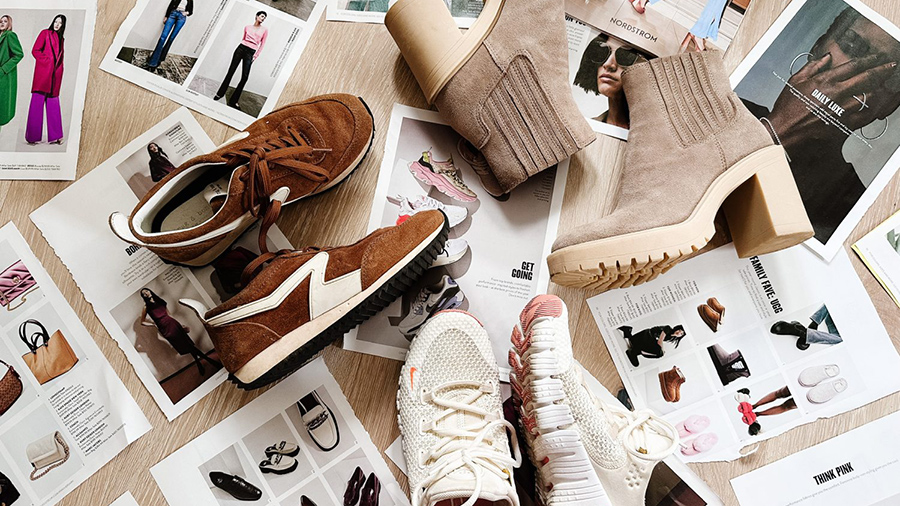In a nationwide survey of footwear consumer purchasing habits conducted by the Footwear Distributors and Retailers of America (FDRA) for the upcoming holiday shopping season, many respondents said they would increase their spending on footwear, with the athletic category being the most popular.
The survey of 1000 consumers conducted by Emerson College Polling from November 1-2 found 36 percent of respondents plan to spend more on footwear this holiday season compared to last during the same period, with 43 percent planning to spend the same. Just 21 percent of respondents plan to spend less than they did last year’s holiday season.
During the holiday season, forty-six percent of respondents plan to spend $100 to $250 on footwear, 30 percent plan to spend less than $100, 18 percent between $250 and $500, and 5 percent over $500.
When asked what type of shoes they are most likely to purchase this holiday season, 42 percent responded with athletic footwear, followed by casual shoes (35 percent), fashion, dress shoes or boots ( 17 percent), and work shoes/boots (7 percent).
Since 2023, athletic shoes have remained about the same in importance, moving from 41 percent to 42 percent. Casual shoes dropped from 39 percent to 35 percent. Fashion shoes also stayed roughly the same, moving from 16 percent to 17 percent, and work shoes increased from 3 percent to 7 percent.
Most respondents, 59 percent, plan to shop for branded shoes during the holidays, while 41 percent plan to look for the best shoes at the best price, regardless of logo.
The survey also found that older respondents are more open to purchasing shoes based on value. Men are more likely than women to shop for branded shoes, 64 percent, compared to 55 percent of women who said the same.
A slight majority of respondents, 53 percent, plan to purchase holiday footwear from Black Friday through Cyber Monday. 26 percent said they plan to make purchases before Thanksgiving, and 21 percent sometime in December.
In 2023, the same share of respondents aligns with this year’s respondents who planned to make holiday shoe purchases between Black Friday through Cyber Monday, at 53 percent, while those looking to make purchases before Thanksgiving decreased from 31 percent to 26 percent, and those purchasing footwear in December increased from 15 percent to 21 percent.
Other survey insights include:
- When asked if they plan to make holiday shoe purchases online or in-store, the majority (57 percent) said they plan to make in-store purchases or pick up curbside from a local retailer, while 43 percent plan to make online purchases shipped directly to their home.
- When asked where they plan to shop for shoes in-store, 47 percent cited a shoe store chain (i.e., Famous Footwear, DSW, Rack Room, Foot Locker), 30 percent a large mass retailer (i.e., Target, Walmart, or Costco), 16 percent a department store (i.e., Macy’s, Nordstrom or Kohls), and 8 percent a discount retailer (i.e., Ross, TJ Maxx or Nordstrom Rack).
- When asked where they plan to shop for shoes online this holiday season, 34 percent said Amazon, Zappos or other shoe-specific websites, 32 percent plan to shop at the shoe brand’s website, 24 percent plan to shop at a retailer’s website like Nordstrom, and 11 percent plan to shop online somewhere else. Shoppers younger than 30 will most likely shop online at the shoe brand’s website at 47 percent, while those in their 30s are most likely to shop at a retailer’s website.
- A plurality (39 percent) said a dollar-off offer would most likely drive them to purchase, 37 percent of respondents found that a BOGO offer would drive them to purchase, and 25 percent said a percent-off offer would be most effective. Dollar-off offers appear to be most effective for respondents shopping for shoes in-store at shoe store chains (47 percent), department stores (44 percent), and discount stores (45 percent), while a plurality of respondents shopping at large retail stores (47 percent) said a BOGO offer would drive them to make a purchase.
- Most respondents (84 percent) would be open to purchasing footwear categories they usually do not purchase if the price or promotions were favorable, while 16 percent would not be inclined to buy.
To view the complete survey, go here.
Image courtesy Nordstrom














